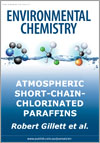EN16128Online analysis of secondary organic aerosols from OH-initiated photooxidation and ozonolysis of α-pinene, β-pinene, Δ3-carene and d-limonene by thermal desorption–photoionisation aerosol mass spectrometry
Environmental context. Secondary organic aerosol, formed by oxidation of volatile precursors such as monoterpenes, is a major contributor to the total atmospheric organic aerosol. We focus on the online mass spectrometric analysis of the aerosol generated by oxidation products of four major monoterpenes in an environmental chamber. Numerous important monoterpene oxidation products were clearly observed and provided a direct comparison of the formation of biogenic secondary organic aerosols.




